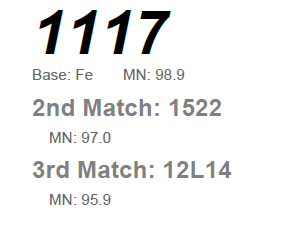Hello great minds,
I have been sent a PMI report for a component (spacer) which forms part of a large motor (taken from offshore floating structure for repair). I have been asked to identify the material grade of the spacer so that a replacement can be purchased. I do not believe a PMI report is sufficient as it does not provide much information on the mechanical properties.
What would you suggest is the quickest and most low cost route to understanding which grade of material we have?
Thank you!
I have been sent a PMI report for a component (spacer) which forms part of a large motor (taken from offshore floating structure for repair). I have been asked to identify the material grade of the spacer so that a replacement can be purchased. I do not believe a PMI report is sufficient as it does not provide much information on the mechanical properties.
What would you suggest is the quickest and most low cost route to understanding which grade of material we have?
Thank you!

